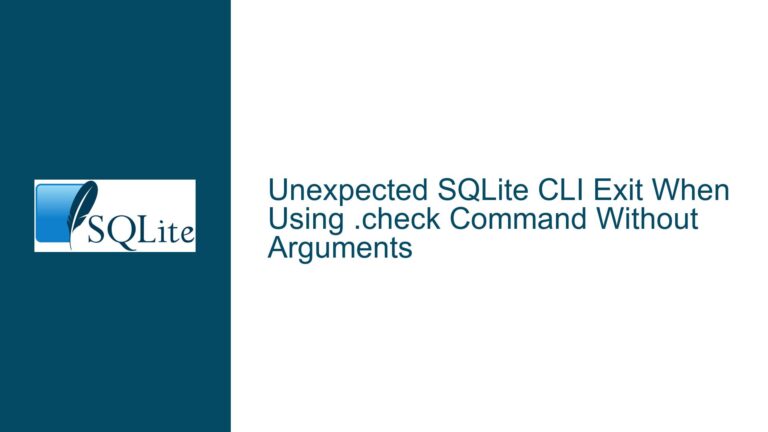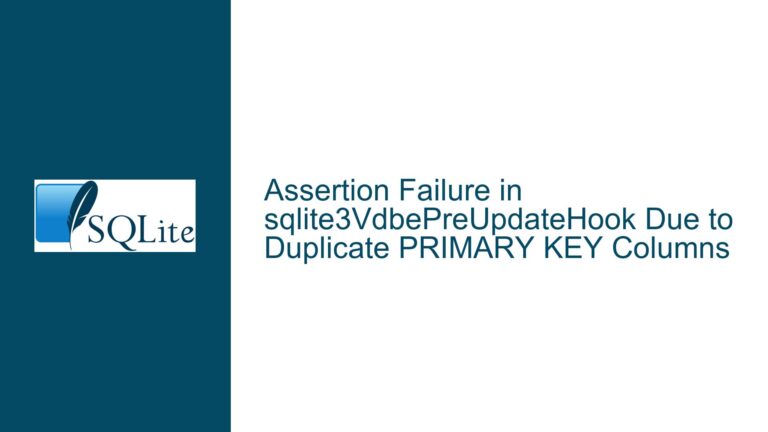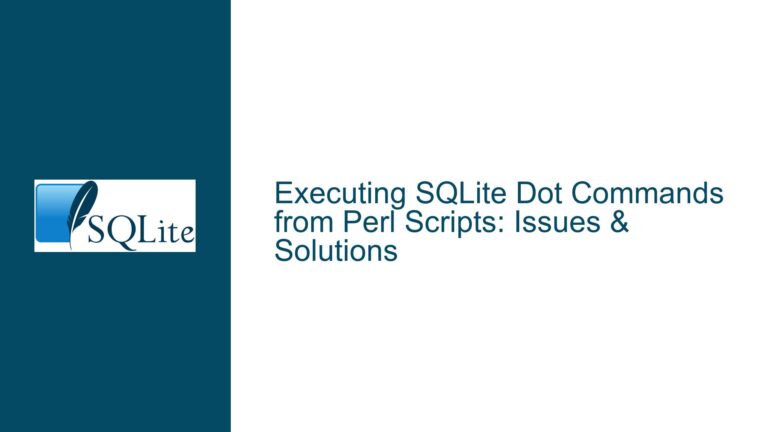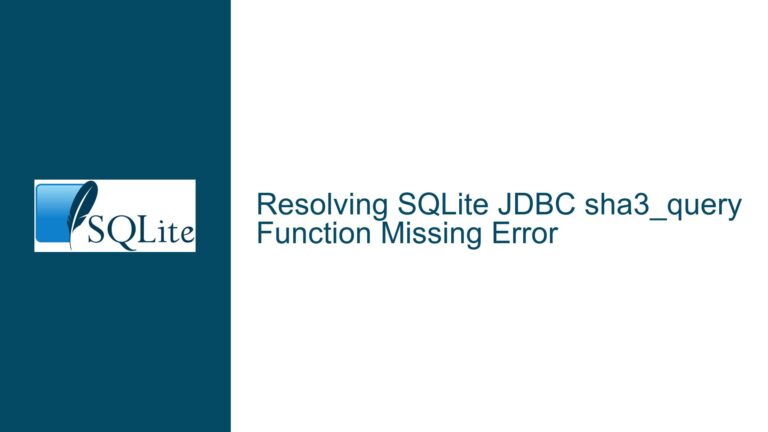and Troubleshooting SQLite Backup Tools Using sqlite_dbpage
Issue Overview: SQLite Backup Tools and sqlite_dbpage Integration
SQLite is a widely-used, lightweight database engine that is embedded in countless applications. One of its strengths is its simplicity and portability, but this also means that certain advanced features, such as built-in backup mechanisms, are not as robust as those found in more heavyweight database systems. This has led to the development of various third-party tools and techniques to address the need for reliable backups. One such tool is s3zip, which leverages the sqlite_dbpage virtual table to create backups in the form of Zip archives.
The sqlite_dbpage virtual table is a powerful feature that allows direct access to the raw pages of an SQLite database file. This can be extremely useful for creating low-level backups, as it enables developers to read and manipulate the database at the page level, bypassing the higher-level SQL interface. However, this approach also introduces several complexities and potential pitfalls that must be carefully managed to ensure data integrity and performance.
When using sqlite_dbpage for backups, developers must be aware of several key considerations. First, the sqlite_dbpage virtual table provides raw access to the database pages, which means that it does not automatically handle issues such as page fragmentation, free space management, or transaction consistency. This can lead to situations where the backup tool inadvertently captures inconsistent or incomplete data, especially if the database is being actively modified during the backup process.
Second, the use of sqlite_dbpage requires a deep understanding of the SQLite file format and page structure. Each page in an SQLite database file has a specific format, including a header that contains metadata such as the page type, free block offsets, and cell pointers. Misinterpreting or mishandling this metadata can result in corrupted backups that are unusable or difficult to restore.
Finally, the integration of sqlite_dbpage with a backup tool like s3zip introduces additional layers of complexity, particularly when it comes to performance and resource management. Reading and writing large numbers of database pages can be resource-intensive, and developers must carefully optimize their code to avoid excessive memory usage, disk I/O, or CPU overhead.
Possible Causes: Challenges in sqlite_dbpage-Based Backup Solutions
The challenges associated with using sqlite_dbpage for backups can be attributed to several factors, each of which must be carefully considered when designing and implementing a backup tool.
One of the primary causes of issues is the lack of transaction consistency when using sqlite_dbpage. Unlike higher-level backup methods, which typically operate within the context of a transaction to ensure that the backup captures a consistent snapshot of the database, sqlite_dbpage provides direct access to the raw pages without any transactional guarantees. This means that if the database is being modified while the backup is in progress, the backup may capture a mix of old and new data, leading to inconsistencies.
Another potential cause of problems is the complexity of the SQLite file format. Each page in an SQLite database file has a specific structure, and the sqlite_dbpage virtual table exposes this structure directly to the developer. This requires a deep understanding of the file format, including the layout of page headers, free blocks, and cell pointers. Misinterpreting this information can lead to errors in the backup process, such as incorrectly identifying free space or misaligning data within the backup archive.
Performance considerations also play a significant role in the challenges associated with sqlite_dbpage-based backups. Reading and writing large numbers of database pages can be resource-intensive, particularly if the backup tool is not optimized for efficient memory usage and disk I/O. Developers must carefully manage resources to avoid excessive overhead, which can slow down the backup process and impact the performance of the database itself.
Finally, the integration of sqlite_dbpage with a backup tool like s3zip introduces additional complexity, particularly when it comes to handling large databases or networks with limited bandwidth. The backup tool must be able to efficiently compress and transfer the database pages, while also ensuring that the backup is reliable and can be restored without issues. This requires careful attention to detail and thorough testing to ensure that the backup tool performs well under a variety of conditions.
Troubleshooting Steps, Solutions & Fixes: Ensuring Reliable Backups with sqlite_dbpage
To address the challenges associated with using sqlite_dbpage for backups, developers can follow a series of troubleshooting steps and implement solutions that ensure the reliability and performance of their backup tools.
The first step in troubleshooting is to ensure that the backup tool operates within a consistent transactional context. This can be achieved by using the BEGIN EXCLUSIVE transaction mode, which locks the database and prevents other processes from modifying it while the backup is in progress. By ensuring that the database is not being modified during the backup, developers can avoid inconsistencies and ensure that the backup captures a consistent snapshot of the data.
Another important step is to thoroughly understand the SQLite file format and the structure of database pages. Developers should familiarize themselves with the layout of page headers, free blocks, and cell pointers, and ensure that their backup tool correctly interprets this information. This may involve writing custom code to parse and handle the raw page data, or using existing libraries that provide this functionality.
Performance optimization is also critical when using sqlite_dbpage for backups. Developers should carefully manage memory usage and disk I/O to avoid excessive overhead. This may involve using efficient data structures and algorithms to process the database pages, as well as implementing techniques such as buffering and compression to reduce the amount of data that needs to be transferred.
In addition to these technical considerations, developers should also thoroughly test their backup tools under a variety of conditions to ensure that they perform reliably. This may involve testing with large databases, high levels of concurrent activity, and limited network bandwidth, as well as simulating various failure scenarios to ensure that the backup tool can handle errors gracefully.
Finally, developers should consider integrating their backup tools with monitoring and alerting systems to ensure that any issues are quickly identified and addressed. This may involve logging detailed information about the backup process, as well as setting up alerts to notify administrators of any failures or performance issues.
By following these troubleshooting steps and implementing the appropriate solutions, developers can ensure that their sqlite_dbpage-based backup tools are reliable, efficient, and capable of handling the complexities of real-world database environments. This will help to ensure that their backups are consistent, accurate, and can be restored without issues, providing peace of mind and data security for their applications.






